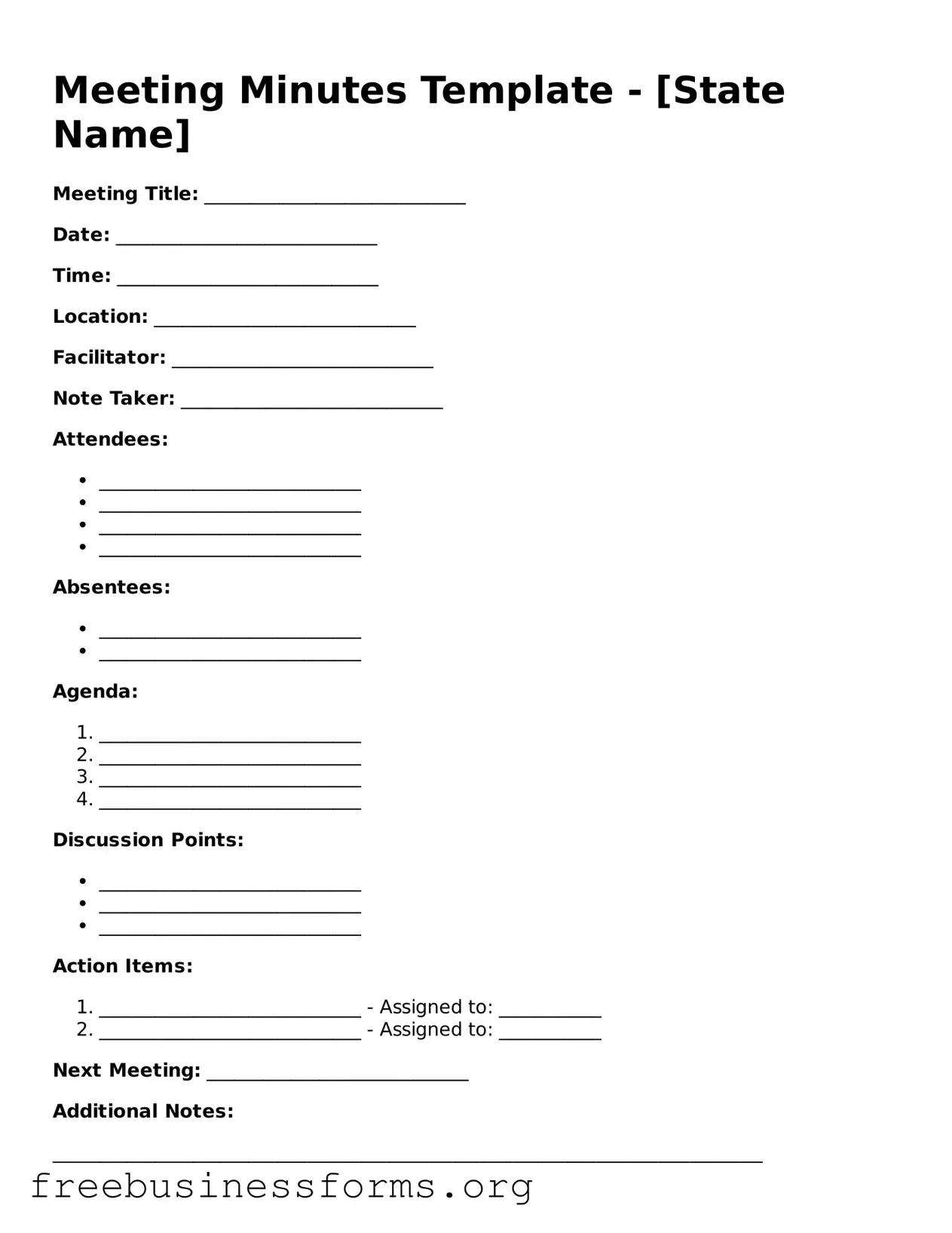Meeting Minutes Template - [State Name]
Meeting Title: ____________________________
Date: ____________________________
Time: ____________________________
Location: ____________________________
Facilitator: ____________________________
Note Taker: ____________________________
Attendees:
- ____________________________
- ____________________________
- ____________________________
- ____________________________
Absentees:
- ____________________________
- ____________________________
Agenda:
- ____________________________
- ____________________________
- ____________________________
- ____________________________
Discussion Points:
- ____________________________
- ____________________________
- ____________________________
Action Items:
- ____________________________ - Assigned to: ___________
- ____________________________ - Assigned to: ___________
Next Meeting: ____________________________
Additional Notes:
____________________________________________________________________________
____________________________________________________________________________
